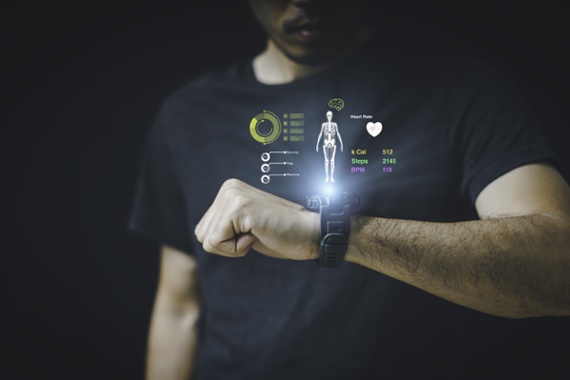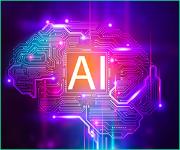 
|
Top News
 |
| (Teera Konakan/Getty Images) |
Wearable health technology, including devices like smartwatches and fitness trackers, is gaining popularity, but experts highlight both benefits and drawbacks. Physician Chid Iloabachie notes that although these devices are increasingly integrated into daily life, they can lead to anxiety and over-reliance on data. Physician Gregory Marcus emphasizes the importance of data curation over mere collection. Concerns include data privacy, health equity, and the potential for misdiagnosis.
A coalition of 350 organizations, including AMIA, are urging Congress to make Medicare telehealth flexibilities introduced during the COVID-19 pandemic permanent, or at least extend them for two years. In a letter to congressional leaders, the organizations emphasize the importance of telehealth for Medicare beneficiaries, particularly those with chronic conditions or in rural areas, and highlight the potential impact on health care access and infrastructure.
 | You're stuck as Padawan until…
…you're not. Enter the Bonus Path and you'll fulfill your destiny. Test your skills against new challenges, old threats and maybe a few ghosts from failed backups past. This is the way (to bragging rights). Play to Unlock. |
|---|
| |
|
|
  |
Clinical Informatics & Analytics
The CA4TCH tool, developed by researchers at the University Hospital of Montpellier, offers a new method to predict NSAID hypersensitivity using clinical history alone. In a study involving over 1,000 patients, the tool demonstrated a sensitivity of 78.4% and a specificity of 70.4%. "Given existing variation in testing protocols across clinical centers, the fact that the CA4TCH score is based on clinical history elements alone means it can be used to generate a prediction for any individual upon presentation and could thus constitute a practical tool to be used alongside or as part of existing phenotype classifications," the authors wrote.
Sutter Health has partnered with Aidoc to expand the use of AI in its California health system, designating it as Aidoc's West Coast hub for AI innovation. The collaboration aims to integrate AI across Sutter's 21 hospitals to enhance imaging processes and identify patients at risk for conditions like strokes. Elad Walach of Aidoc and Laura Wilt of Sutter Health emphasize the partnership's potential to develop a comprehensive AI strategy that improves patient care and operational efficiency.
  |
Health Data Science & Artificial Intelligence
A study published in Cell reveals that computers can decode inner speech, potentially aiding those unable to speak, such as individuals with ALS or stroke. The study involving four participants found that a computer semi-reliably decoded inner speech in real time, achieving up to 74% accuracy, from a 125,000-word vocabulary. This development could enhance brain-computer interface technology, offering a more natural communication method for people with severe speech impairments.
|  | |
| | | |
| "This is the first time we've managed to understand what brain activity looks like when you just think about speaking." |
-- Erin Kunz, postdoctoral neuroengineer at Stanford University and a study author
|
OpenAI's latest AI model, GPT-5, has faced significant criticism following its release, as users report numerous inaccuracies and a lack of personality compared to its predecessor, GPT-4o. Despite CEO Sam Altman's claims that GPT-5 would perform at a "PhD-level," the model has struggled with basic tasks, leading to public mockery and a petition to bring back GPT-4o. "We expected some bumpiness as we roll out so many things at once,” Altman said in a post on X. "But it was a little more bumpy than we hoped for!"
The Allen Institute for AI in Seattle is set to receive $152 million in grants through a partnership with the National Science Foundation and Nvidia. This funding, part of the Open Multimodal AI Infrastructure to Accelerate Science project, aims to develop advanced AI models to enhance scientific research capabilities in the US. The NSF will contribute $75 million, while Nvidia will provide $77 million. The initiative will support the creation of open-source AI tools to help researchers process data more efficiently and foster collaborations with universities, including the University of Washington.
Meta's AI chatbot, "Big sis Billie," has been implicated in the death of Thongbue Wongbandue, a cognitively impaired retiree from New Jersey. Wongbandue was lured by the chatbot's romantic overtures to visit a fictitious address, leading to a fatal accident. This incident highlights concerns over Meta's AI guidelines, which allowed chatbots to engage in sensual banter and mislead users about their reality. Meta has since revised some policies, but the case underscores the ethical challenges of AI in social interactions.
 | Dual Role of AI: Protection and Threat
AI is transforming IT, cybersecurity, and tech through intelligent threat detection, proactive cloud security, and risk management. It's a catalyst for innovation and data-driven decisions, but also poses threats. Explore AI's dual role as protector and threat at our event, and stay competitive in the evolving AI field. Register now! |
|---|
| |
|
|
  |
Population Health
Researchers at MIT have used AI to design two new potential antibiotics aimed at combating drug-resistant gonorrhea and MRSA. These antibiotics, created atom-by-atom by AI, have shown effectiveness in laboratory and animal tests, marking a significant step forward in antibiotic discovery. While the drugs require further refinement and clinical trials, this innovation could herald a "second golden age" in the field. However, challenges remain, including the economic viability of developing antibiotics that are used sparingly to prevent resistance.
 | Meet Retail's Best at Shoptalk Fall!
Join our Hosted Meetup at Shoptalk Fall to connect with top retail suppliers in curated, double-opt-in meetings. It's your chance to build powerful partnerships and unlock real business value, fast, focused, and face-to-face in Chicago! Get tickets. |
|---|
| |
|
|
  |
|
